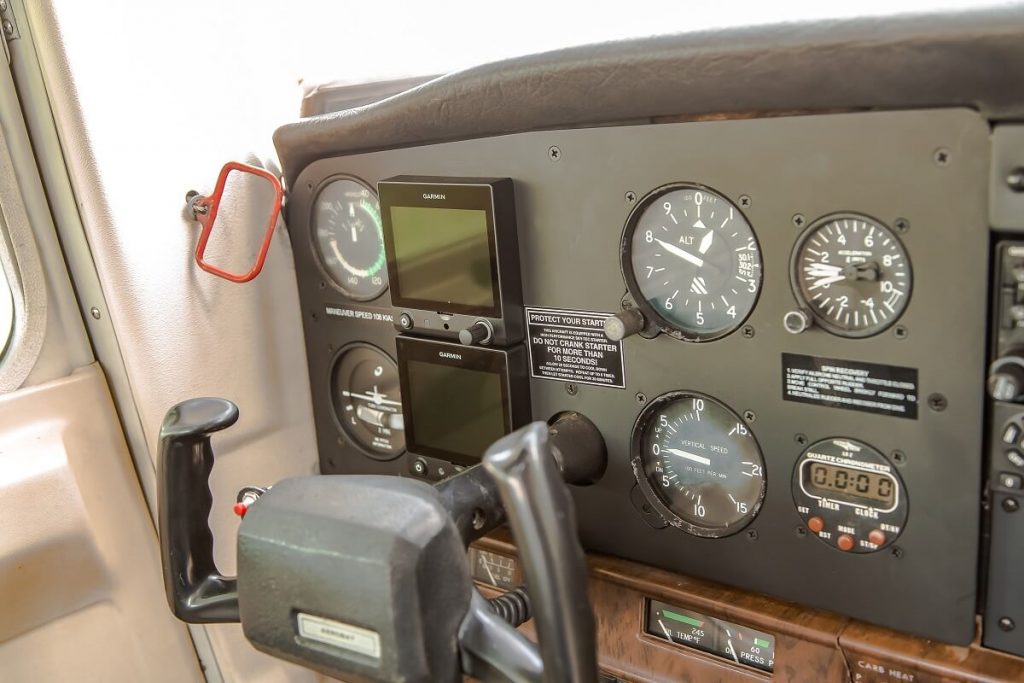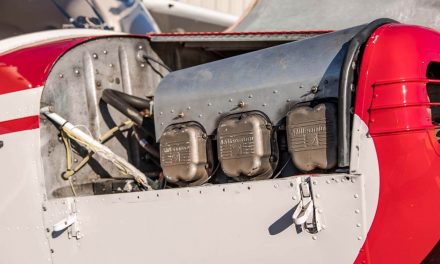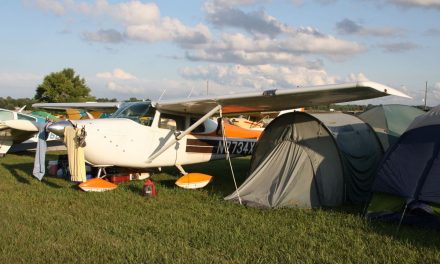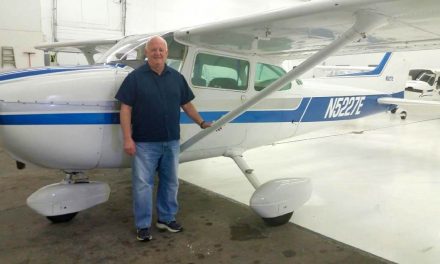
Photo by Jack Fleetwood www.jackfleetwood.com
By Tamara Griffith
This Cessna Aerobat is owned by Fox Aviation International Inc. I am the chief CFI and primary mechanic for the flight school. I have a great team behind me to help operate the flight school and maintain the aircraft including the owner of Fox Aviation, David Foster, and my husband, Bennett, who helps me maintain the aircraft, especially when I have to also instruct. We name all our planes at this school and the Aerobat is affectionally known as Brat. Usually for many students just when they think they have its quirks figured out it proves they’re just a little complacent.
Cessna Aerobats are a great aircraft. They have all the familiar qualities of the Cessna 150/152, but all the extra strength hidden away makes them just more capable to have that extra fun. I personally have not had the pleasure of taking this one through any real aerobatics as we lack the parachutes required, but I do have the pleasure of using it for spin training and all the stall practices. Also, because it is rated for more g, I can allow the students even more room to experience their errors and recover. That has allowed me to be a better instructor, too.
Cessna 152 Aerobats look and feel and are basically the same as all the other Cessna 150s and 152s. The only few visible signs it’s not your everyday 152 are the skylights, the details in the paint schemes, the G meter in the dash panel, and the handles for pulling the door pins from the door hinge. The placards of the limitations for the aerobatic maneuvers are also an indication.
Internally is where the magic has happened. They used sturdier struts, stronger engine mounts, and some skin areas on the wings are thicker.
There’s also an extra doubler where the skylights are installed. Many assume engines with more horsepower were installed but originally it was the Lycoming O-235 like ours is, many STC options were eventually created. Many also came with attitude indicators that could cage to not tumble the gyros, but this was not installed in ours when we purchased it. We also installed an STC option of the Sensenich propeller when we installed a factory overhauled engine shortly after we bought it.
Ours currently is mostly original paint, some touch ups were applied during a windshield replacement prior to our purchase. Our panel when we originally bought it looked like any other 152, but we have since updated it with G5 attitude and HSI and Garmin 430W. We have now instrument certified the aircraft. The G5 set up also allows us to eliminate the gyro/vacuum system, which is good for us because spin training was definitely ruining the gyros a bit faster than normal training does. It has an analog airspeed indicator and electric turn and bank indicator, the two G5s are slightly off center but well-placed, and an analog altimeter and VSI. Next is the G meter and the required clock under that. The single radio and GPS, which is the Garmin 430W, and a Garmin Transponder 335 finish out the panel. It is ADS-B compliant, which was part of reason for the new panel also. We have an analog tachometer and a Hobbs meter. It is also equipped with a dual intercom. Cessna always had a fairly standard layout pattern and worked the same in these also. The G meter is usually the one item students notice is different from the other 152 we operate.
When buying something that is aerobatic capable, on top of the usual things to look for during a prebuy of an aircraft, it’s important to determine if any signs of overstress are visible or even repaired. Otherwise buying an Aerobat is like buying a regular Cessna 150 or Cessna 152.
The beauty of these planes is the simplicity of their systems and the durability built into them. I am sure Cessna never imagined these planes would still be flying all these years later. The only thing I noticed is this particular plane is it seems to have a mild aversion to right hand spins. Sometimes it just refuses to develop strong right turn spins. Not the worst quirk but, compared to some other aerobatic planes, it’s different and in some ways relaxing when training.
Only things I would change would be to put back on its wheelpants and repaint it back to its original glory! We operate on grass strips often and it’s used for primary training so the removal was so we would not damage it more than normal wear and tear. That would be the other thing I would change — a better way to access the valve stem with the wheelpants on.






